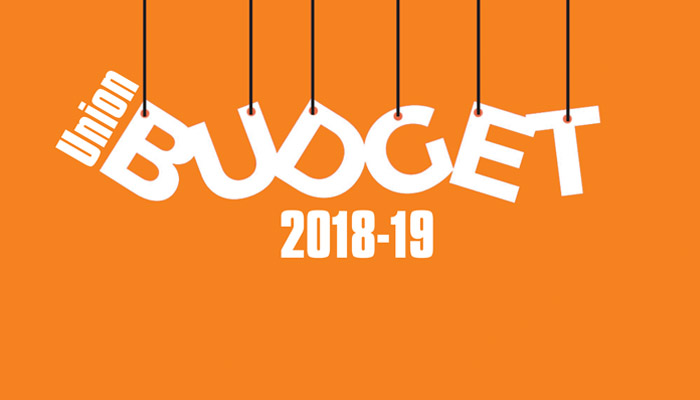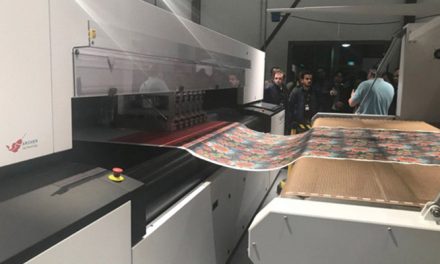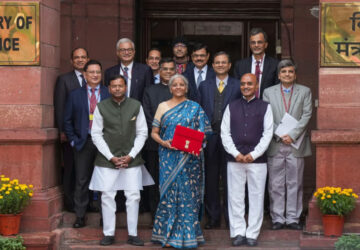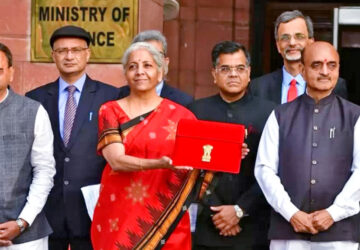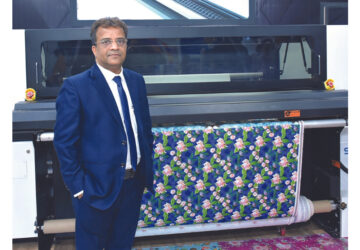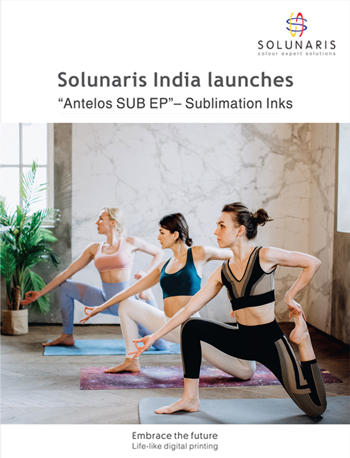The much-awaited Union Budget 2018-19, was presented by the Union Finance Minister of India, Arun Jaitely in the Parliament recently. Textile and apparel industry was hoping for some good announcements as this sector is claimed to be the most affected ones due to Demonetisation and GST implementation and the Budget has not disappointed them. In fact many of the apparel and textiles associations heads in India have termed this year’s Budget as positive, pragmatic, and growth oriented for the industry. Given below are the reactions of the leading apparel and textile associations in India over the same.

HKL Magu Chairman, Apparel Export Promotion Council (AEPC)
The Union Budget had some positive news for the industry. We welcome the optimism on GDP growth targets and measures to boost agriculture and health – both impacting the stakeholders in the industry. The reduction in corporate tax for SMEs with turnover up to Rs. 250 cr would also augur well for avast section of our industry. The textile industry got an increased allocation of Rs. 7148 cr which included an increased allocation of Rs. 2163.85 cr for RoSL for 2018-19, as against Rs. 1855 cr for 2017-18. I hope this additional fund of Rs. 308.85 cr will be sufficient to meet the backlog and increased requirement towards accommodating embedded taxes and targeted growth in exports to $20 bn. I have already requested the Ministry for immediate release of all pending ROSL and GST refunds as I am aware of the acute financial constraints that the industry is facing.
The apparel industry is a womenoriented industry; the proposed reduction in the women’s contribution to EPF to 8 per cent from the present 12 per cent will encourage women’s participation in this sector further. I would like to inform our friends that AEPC has sent its pre-budget proposals to the Ministry of textiles for their consideration. In our submission to the Ministry of textiles, we have raised issues such as Exemption of IGST on import under EPC scheme, Exemption of Apparel Buying agent from paying taxes, duty free import of sample fabrics under EPC scheme. The industry is looking forward to an early redemption of these issues in order to keep the sector floating.
I am also happy to share that an important recommendation of the Council had been accepted by the GST Council in its meeting, held on January 18, 2018, which is the decision to exempt GST on air and sea freight till September 30, 2018. I am thankful to our Minister of Textiles, Smriti Zubin Irani for taking up the issue and providing this relief to the industry.

Rahul Mehta President, Clothing Manufacturers Association of India (CMAI)
Budget is positive and growth oriented for the apparel industry. In addition to certain specific provisions for this industry, the general focus of the Budget on rural economy, including significant fund allocations, would help in pushing up demand for apparel in the domestic market. The added emphasis on infrastructure development is welcoming step, and apparel manufacturing involved significant domestic transportation of raw materials as well as finished goods and infrastructural bottlenecks have been hindering this industry.
We thank the Finance Minister for enhancing the allocation for the Special Scheme for the apparel sector from Rs. 6,000 cr in 2017-18 to Rs. 7148 cr for 2018-19. While extending government contribution of 12 per cent towards EPF of new employees, which was an element in the Special Package, to all sectors, its applicability has also been extended to the next three years. This will provide an additional momentum to hiring of workers by the apparel industry. Referring to the reduction of women employees’ contribution towards EPF to 8 per cent for the first three years, he pointed out that workers in apparel industry will be among the primary beneficiaries of this provision, since the sector extensively employed women.
Mehta thanked Finance Minister for enhancing the turn over limit from Rs. 50 cr to Rs. 250 cr for eligibility to the reduced corporate tax rate of 25 per cent and sated that a large number of units in the apparel sector would benefit from this. He stated that the enhanced economic growth envisaged in the Budget will help in improving demand for apparel, which is one of the primary needs of the masses. Mehta added that the positive impact of the Budget on the apparel industry will also be reflected in job creation, since this is the most labour intensive industry in the country.

Raja M Shanmugam President, Tirupur Exporters Association (TEA)
We welcome the extension of corporate tax at 25 per cent to the companies turnover up to Rs. 250 cr in the Financial year 2016-17 which is beneficial particularly to the medium enterprises. The announcement on launching of flagship National Health Protection Scheme to cover over 10 cr poor and vulnerable families (approximately 50 cr beneficiaries) providing coverage upto 5 lakh rupees per family per year for secondary and tertiary care hospitalization and added this will be beneficial to the employees in Tirupur cluster also.
At the time of setting up 24 new Government Medical Colleges and Hospitals by upgrading existing district hospitals in the country and ensuring at least 1 Medical College for every 3 Parliamentary Constituencies, we appeal for considering Tirupur to set up a Government Medical College and felt more number of students will get admitted in the medical colleges.
The increased allocation for infrastructure will overall benefit for the growth of industry and ease of doing business. Knitwear hub of India, happening city, should be given importance in improvement of infrastructure facilities and pointed out that due to lack of a connecting body with policy makers, which has been requested a quite some time and this time also no mention about it in the Budget.
The proposed amendment in the EPF to reduce women employees contribution to 8 per cent for first three years of their employment against existing rate of 12 per cent. However, we are disappointed over less allocation of amount for Remission of State Levies (ROSL) in the revised estimates also as the pending claim is more for the apparel sector and pointed out that the ROSL scheme came into effect from 20th September 2016 and the actual requirement for our apparel sector alone till 31st March 2018 is in the region of Rs. 5,000 cr (Average 3.5 per cent of FOB value of garments) whereas, the total allocation for this period was Rs. 2,255 cr only. The concern is that the Made up sector have also to be given ROSL benefit out of the allotted amount.
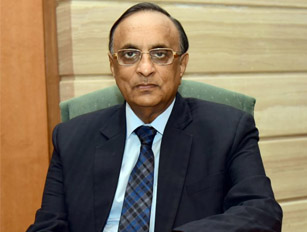
Ganesh Kumar Gupta President, Federation of Indian Export Organisations (FIEO)
It’s a balanced Budget for the country aiming at inclusive growth and transforming rural India. The focus of the Budget is on agriculture, rural economy, infrastructure, MSME and exports. The target to take agriexports from $30 bn to $100 bn is very encouraging as agri-exports would be instrumental in doubling farmers’ income. A stable Agri Export Policy based on digitalized current stock position, scientific forecasting of crop prospects, current demand would help in devising such a policy. The backward and forward linkages in agriculture through logistics and supply chain would be required to meet such targets. The state-of-art facility in 42 mega Food Park will unleash the potential of food processing exports.
The increased allocation from Rs. 1,100 cr to Rs. 2,000 cr for the Interest Equalization Scheme (IES) for the current year and Rs. 2,500 cr for 2018-19 would help the export sector as it gives cushion to include merchant exporters and services exporters also for the benefit of IES. Similarly, enhanced allocation for Remission of State Levies (ROSL) from Rs. 1,555 cr to Rs. 1,855 cr for the current fiscal and Rs. 2,164 cr for the subsequent fiscal will not only help in clearing the backlog but could also be used to extend the benefit to carpets, handicrafts and fabrics & yarn exports. Extension of fix term employment facility for all sectors will benefit the exporters who were demanding it for long. It will allow them to provide additional jobs as and when they get export orders particularly in sectors where the demand is seasonal in nature.
The Budget has also provided a boost to logistics sector which will help in imparting competitiveness to exports. Increasing allocation for railways, roads, shipping and coastal navigation, electronic payment facility at all toll gates, single logistics portal to meet all logistics requirement will go a long way in reducing the logistics cost of exports. The reduction in the Corporate Tax rate will help the US subsidiaries to continue their operation in the country besides revisiting on this issue by those who were exploring the option to set up further production base in US to avail lower Corporate Tax benefit.
15 per cent growth in exports is very much on the card as global trade is booming supported by buoyancy in commodities. However, a volume-wise growth would pose some challenge due to appreciation of Indian Rupee, liquidity crunch and increasing protectionism across the globe.
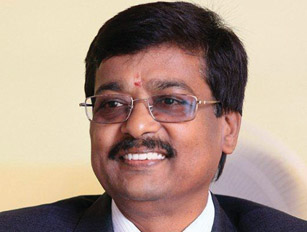
P Nataraj Chairman, The Southern India Mills’ Association (SIMA)
The scheme for MSMEs to address the issues relating to NPA norms and stressed assets is a welcome step, as it has been a long pending demand from the industry. Extension of 12 per cent EPF employer’s contribution for the first three years of employment and also the fixed term employment for all the sectors of the industry would encourage job creation in the textile industry.
More than 80 per cent of the textile units would benefit due to the reduced corporate tax rate for units having up to Rs. 250 cr annual turnover. This would help them to plough back the amount for creating additional jobs and value addition. The Union budget has allocated Rs. 2,164 cr for Remission of State Levies (RoSL) as against Rs. 1,855 cr allotted last year for exports of garments and madeups. This amount is inadequate as there is huge backlog even for the year 2017. Timely disbursement of government dues is very much essential to ensure adequacy in working capital and achieve a sustained growth rate in exports and job creation.

Ujwal R Lahoti Chairman, The Cotton Textiles Export Promotion Council (TEXPROCIL)
The Budget is pragmatic, growthoriented and all inclusive. The government had approved a comprehensive textile sector package of Rs. 6,000 cr to boost the apparel and made-up segments. The Budget has provided an outlay of Rs. 7,148 cr for the textile sector in 2018-19. I hope that the increased funds allocated for the textile sector will cover fabrics also under the rebate on state levies (ROSL) scheme.
The government will contribute 12 per cent of the wages of the new employees in the EPF for all the sectors for next three years, which could boost hiring in the apparel sector. Also, the facility of fixedterm employment will be extended to all sectors. The Budget has increased the funds allocation under the TUF scheme from Rs. 2,013 cr in 2017-18 to Rs. 2,300 for 2018-19. This is a positive step and will help in clearing some of the committed liabilities under the TUF scheme. The reduced income tax rate of 25 per cent allowed to companies who have reported turnover up to Rs. 250 cr in the financial year 2016-17 will greatly benefits the micro, small and medium enterprises.

Sanjay Jain Chairman, The Confederation of Indian Textile Industry (CITI)
We welcome the budgetary allocation for textile sector of Rs. 7,148 cr in the Union Budget 2018-19 and the announcements pertaining to the MSME sector. However, it is a big disappointment for the industry that its recommendations to increase import duty across the value chain have not been addressed.
Basic custom duty (BCD) on silk fabric has been increased to 20 per cent from 10 per cent. This would save the industry from dumping from China. The industry is facing higher imports post GST across the value added segment and was seeking increase in BCD across yarn and fabric, hence, disappointed with this partial measure.
The minimum support price (MSP) of all crops is to be made 1.5 times that of the production cost. This will benefit cotton farmers, but will result in high inflation for the consumers (as cotton constitutes 70 per cent of the consumption) and the downstream segments. This would also make our industry uncompetitive internationally.

Shri Sri Narain Aggarwal Chairman, The Synthetic & Rayon Textiles Export Promotion Council (SRTEPC)
The Union Budget 2018-19 is guided by mission to strengthen employment generation, MSME, infrastructure sectors including agriculture, rural development, health and education. This is a progressive Budget announced by the government. The series of structural reforms proposed by the government in the Budget are likely to propel growth in the Indian economy that will directly help us to emerge amongst the fastest growing economies of the world. It is expected that India is on course to achieve over 8 per cent growth as manufacturing, services and exports back on good growth path.
Major sops for Textile industry in the Union Budget 2018-19 are as under –
It is proposed to provide an outlay of Rs. 7148 cr for the textile sector in 2018-19, Major fund allocated under ATUFS has been increased to Rs. 2300 cr for 2018-19 from Rs. 2013 cr during 2017-18, Fund allocation under ROSL has been increased to Rs. 2164 cr from Rs. 1555 cr during 2017-18. It shows the Government’s commitment for employment generating sectors viz., garments and made-ups exports, Customs Duty on Silk fabrics has been increased to 20 per cent from current 10 per cent to protect the domestic manufacturers from surging imports in line with “Make in India” initiative of the government.
Number of steps to boost employment generation in the country include: –
Contribution of 8.33 per cent of Employee Provident Fund (EPF) for new employees by the Government for three years, Contribution of 12 per cent to EPF for new employees for three years by the Government in sectors employing large number of people like textile, leather and footwear, Additional deduction to the employees of 30 per cent of the wages paid for new employees under the Income Tax Act, Launch of National Apprenticeship Scheme with stipend support and sharing of the cost of basic training by the Government to give training to 50 lakh youth by 2020, Introducing system of fixed term employment Under Section 80-JJAA to be relaxed to 150 days for apparel and footwear sector, Increasing paid maternity leave from 12 weeks to 26 weeks, along with provision of crèches.
Rs. 3794 cr is provided to MSME Sector for giving credit support, capital and interest subsidy and innovations. It is proposed to set a target of Rs. 3 lakh cr for lending under MUDRA for 2018-19 after having successfully exceeded the targets in all previous years to support small entrepreneurs of Women, SCs, STs and OBCs. It is proposed to abolish the Education Cess and Secondary and Higher Education Cess on imported goods and in its place impose a Social Welfare Surcharge, at the rate of 10 per cent of the aggregate duties of Customs, on imported goods, to provide for social welfare schemes of the Government. This hike will help in protecting domestic industry from cheap imports. Rs. 5.97 lakh crallocation for infrastructure to increase growth of GDP, connect and integrate the nation with a network of roads, airports, railways, ports and inland waterways and to provide good quality services to our people. This will suitably address the current infrastructural challenges being faced by the exporters. Fund for Interest Equalisation Scheme has been more than doubled to Rs. 2500 cr in 2018-19 from Rs. 1100 cr during 2017-18. This will substantially help in reducing the cost of capital in India which at present is significantly higher as compared to the competing countries. The Merchant Exporters who are at present out of the ambit of Interest Equalisation Scheme are also likely to be covered with similar benefits at par with the Manufacturing exporters under this Scheme.
It is expected that the above initiatives of the Government will help in development and growth of textile industry in India in general and for export of textiles in particular.


